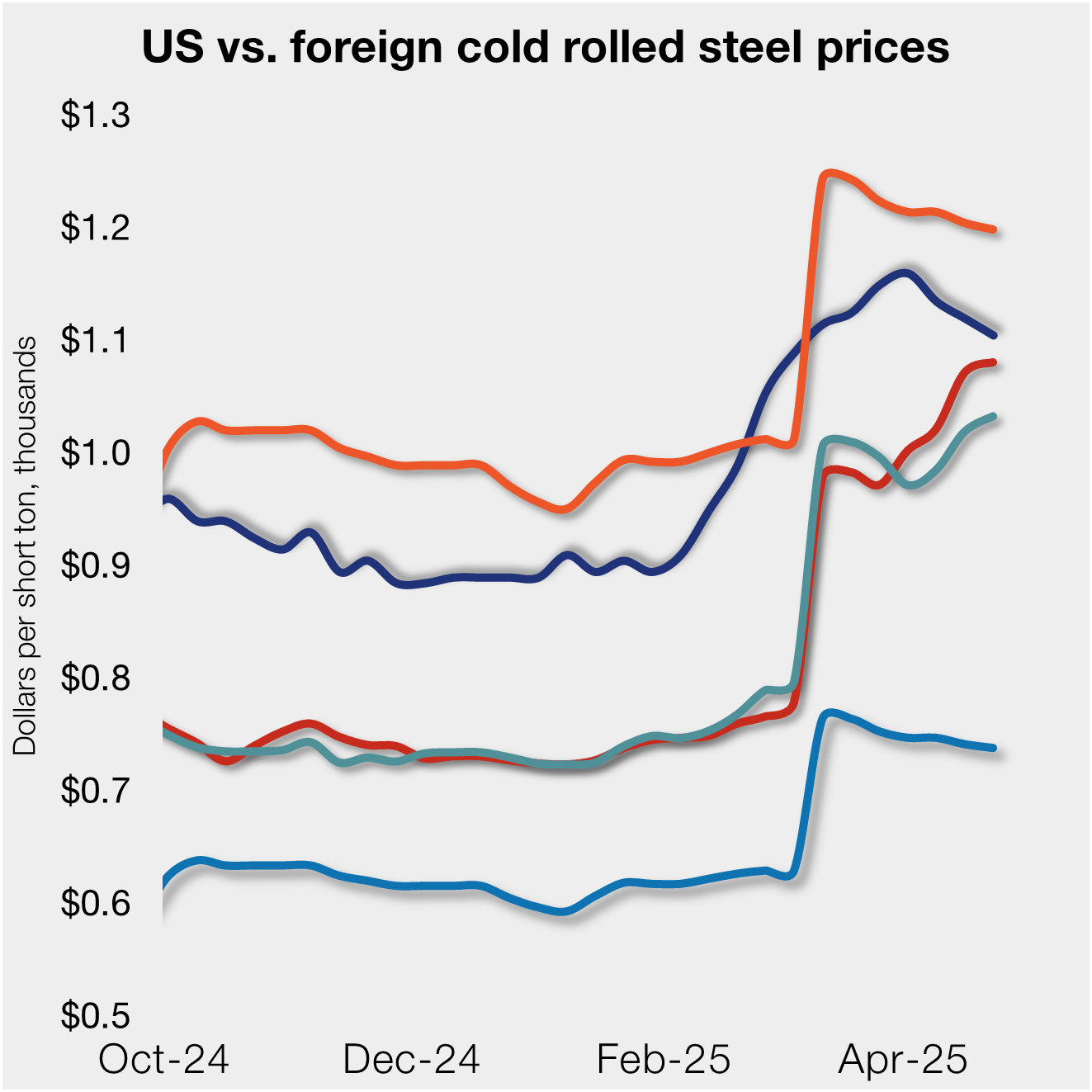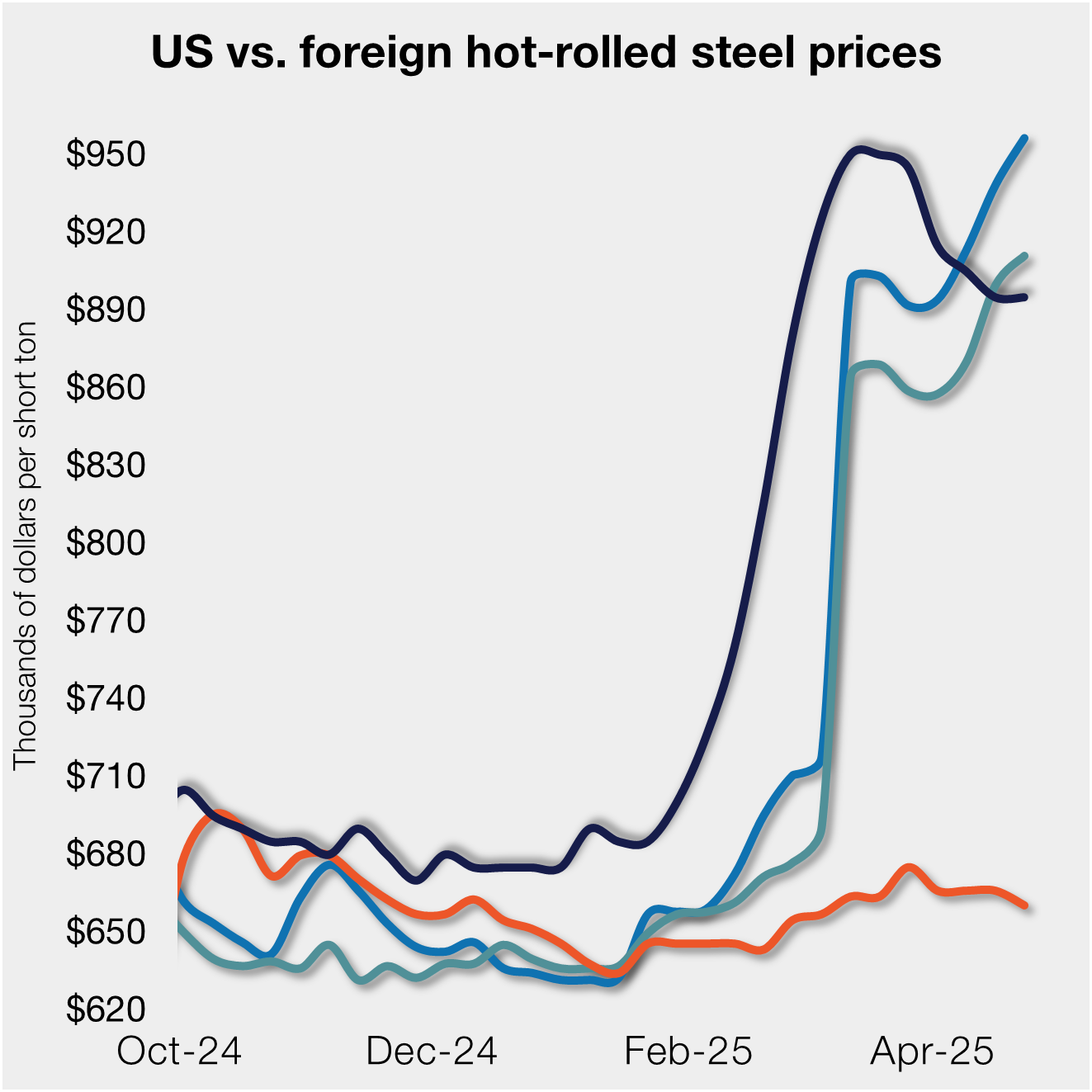Steel Products
Construction Jobs Increase in 35 States in 2017
Written by Sandy Williams
March 13, 2018
Thirty-five states and the District of Columbia added construction jobs between January 2017 and January 2018, according to an analysis of Department of Labor data by the Associated General Contractors of America.
“It is noteworthy that the three states with the largest job gains were all recovering from natural disasters, in addition to having generally robust economies,” said AGC chief economist Ken Simonson. “The job losses in North Dakota and other Plains states may have more to do with severe weather conditions this January than a long-term downtrend.”
California added the most construction jobs (75,500 jobs, 9.8 percent) during the past year. Other states adding a high number of new construction jobs for the past 12 months include Florida (28,600 jobs, 5.8 percent); Texas (28,100 jobs, 4.0 percent) and Washington (16,500 jobs, 8.5 percent). West Virginia added the highest percentage of new construction jobs during the past year, followed by California; Nevada (9.7 percent, 7,800 jobs) and New Mexico (9.7 percent, 4,300 jobs).
Fifteen states shed construction jobs between January 2017 and January 2018. North Dakota lost the highest percentage of construction jobs, by far (-15.8 percent, -4,600 jobs), followed by Iowa (-5.9 percent, -4,600 jobs) and Nebraska -3.1 percent, -1,600 jobs). North Dakota and Iowa lost the largest number of jobs for the year, followed by Louisiana (-3,400 jobs, -2.3 percent) and Missouri (-3,000 jobs, -2.5 percent).
Thirty-one states and D.C. added construction jobs between December and January. California added the most (11,100 jobs, 1.3 percent), followed by Florida (5,100 jobs, 1.0 percent) and Washington (3,100 jobs, 1.5 percent). New Mexico added the highest percentage of construction jobs for the month (3.0 percent, 1,400 jobs), followed by Alaska (2.5 percent, 400 jobs) and Nevada (2.2 percent, 1,900 jobs).
{loadposition reserved_message}
Seventeen states lost construction jobs between December and January, while construction employment was unchanged in Kansas and New York. Pennsylvania lost the most construction jobs for the month (-4,300 jobs, -1.7 percent), followed by Missouri (-2,400 jobs, -2.0 percent) and Louisiana (-2,100 jobs, -1.5 percent). Nebraska lost the highest percentage of construction jobs (-2.3 percent, -1,200 jobs), followed by Missouri; Pennsylvania; North Dakota (-1.6 percent, -400 jobs) and Louisiana.
AGC cautioned that Section 232 tariffs imposed on steel and aluminum products are likely to undermine future job growth in the sector.
“The widespread growth of these good-paying jobs is encouraging,” said Simonson. “But many of the jobs are at risk if unwise tariffs push up materials costs, making projects unaffordable, and if the nation continues to underfund infrastructure investment.”
“Many construction firms will be forced to absorb the increases in steel and aluminum prices these new tariffs are already causing, making it even harder to add new personnel,” said Stephen E. Sandherr, the association’s chief executive officer. “The irony here is that by seeking to help one sector of our economy, the president is likely to damage the rest of it.”

Sandy Williams
Read more from Sandy WilliamsLatest in Steel Products

US rig count up, Canada declines
Oil and gas drilling activity was mixed this week, according to Baker Hughes. US rig counts expanded for a second straight week, while Canadian activity continued its seasonal slowdown of eight consecutive weeks.

US, offshore CRC prices continue to diverge
US cold-rolled (CR) coil prices declined again this week, slipping for a third straight week. Most offshore markets did the opposite, moving higher this week.

S232 lifts EU HR price over US, Asian HR still well behind
Domestic hot-rolled coil prices were flat this week after dropping for four straight weeks. Most offshore markets bucked the trend and gained ground.

SMU Steel Demand Index dips into contraction
SMU’s Steel Demand Index has moved into contraction, according to late April indicators. The slowdown comes in response to growing tariff uncertainty after the index reached a four-year high in late February.

Nucor selects Fives Group for new galv line at CSI
Nucor Corp. has tapped Fives Group as its partner in designing and manufacturing the new continuous galvanizing line being added at its California Steel Industries (CSI) joint venture in Fontana, Calif.
